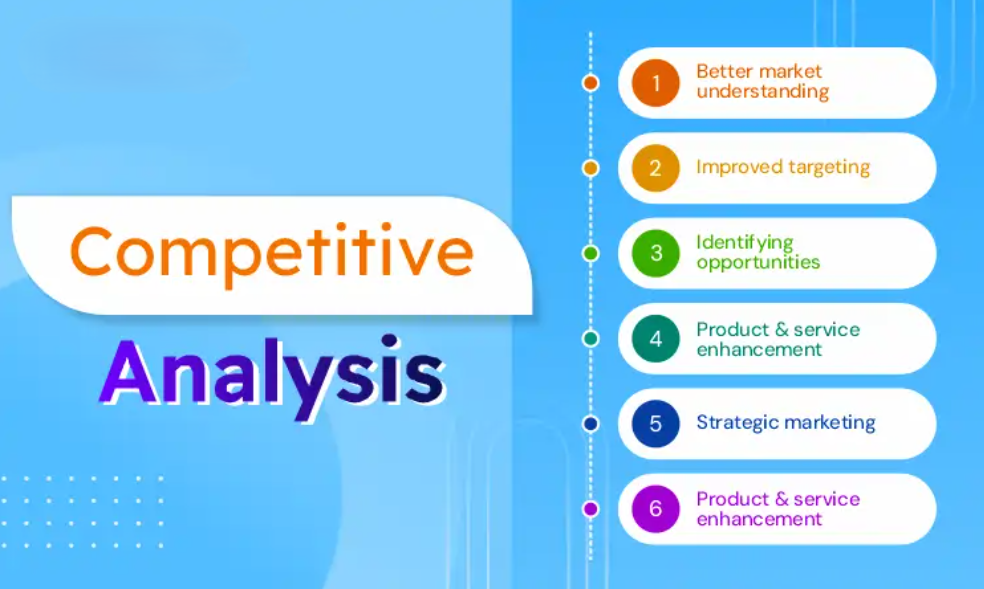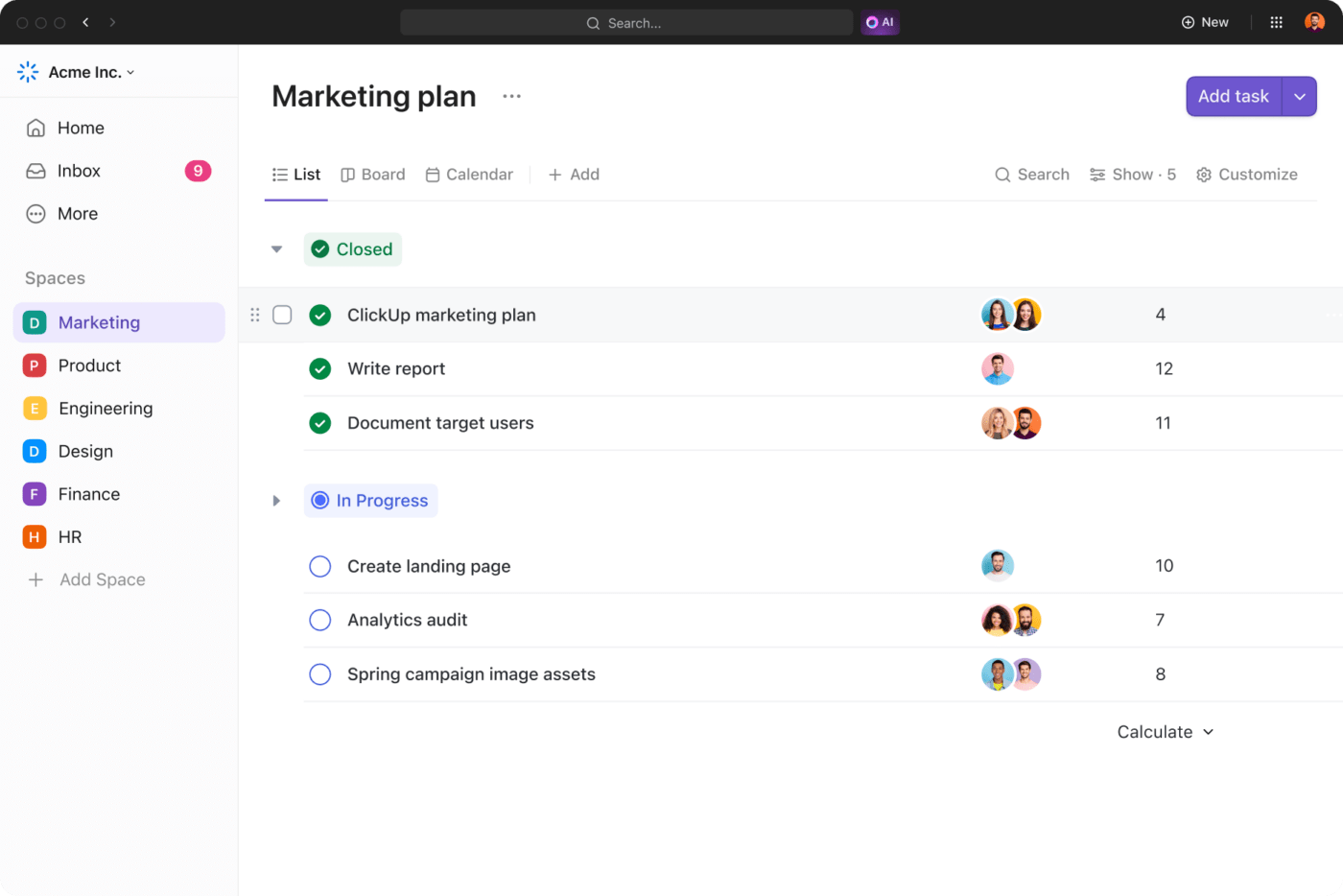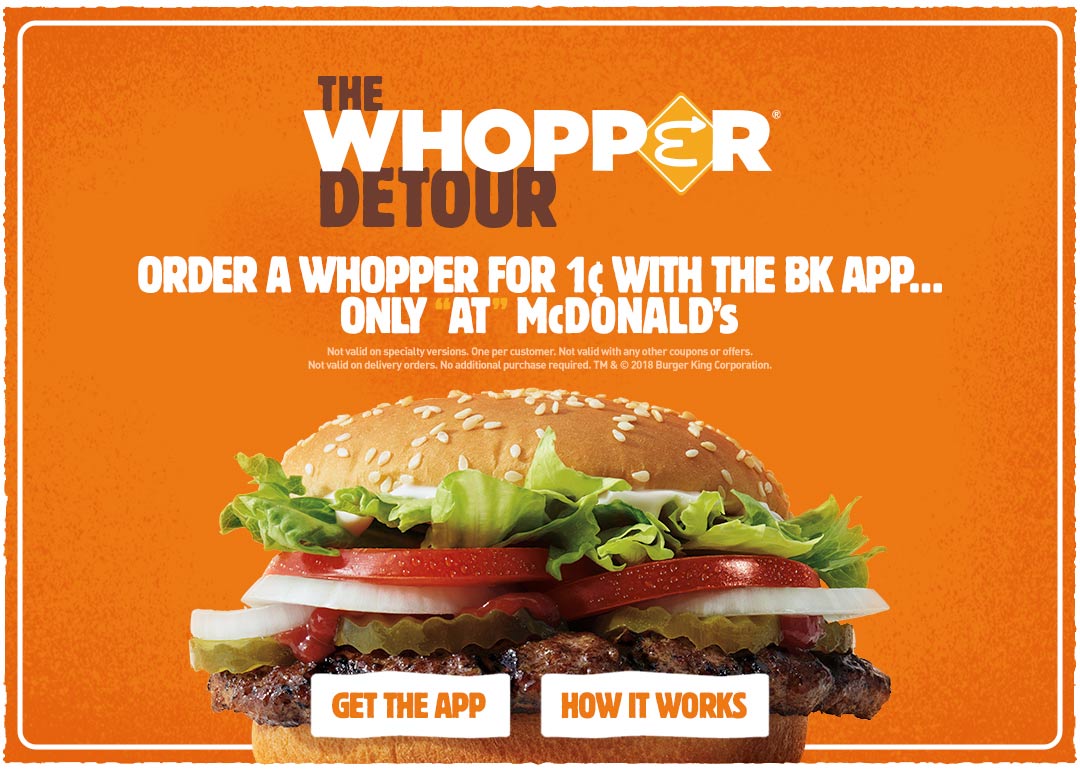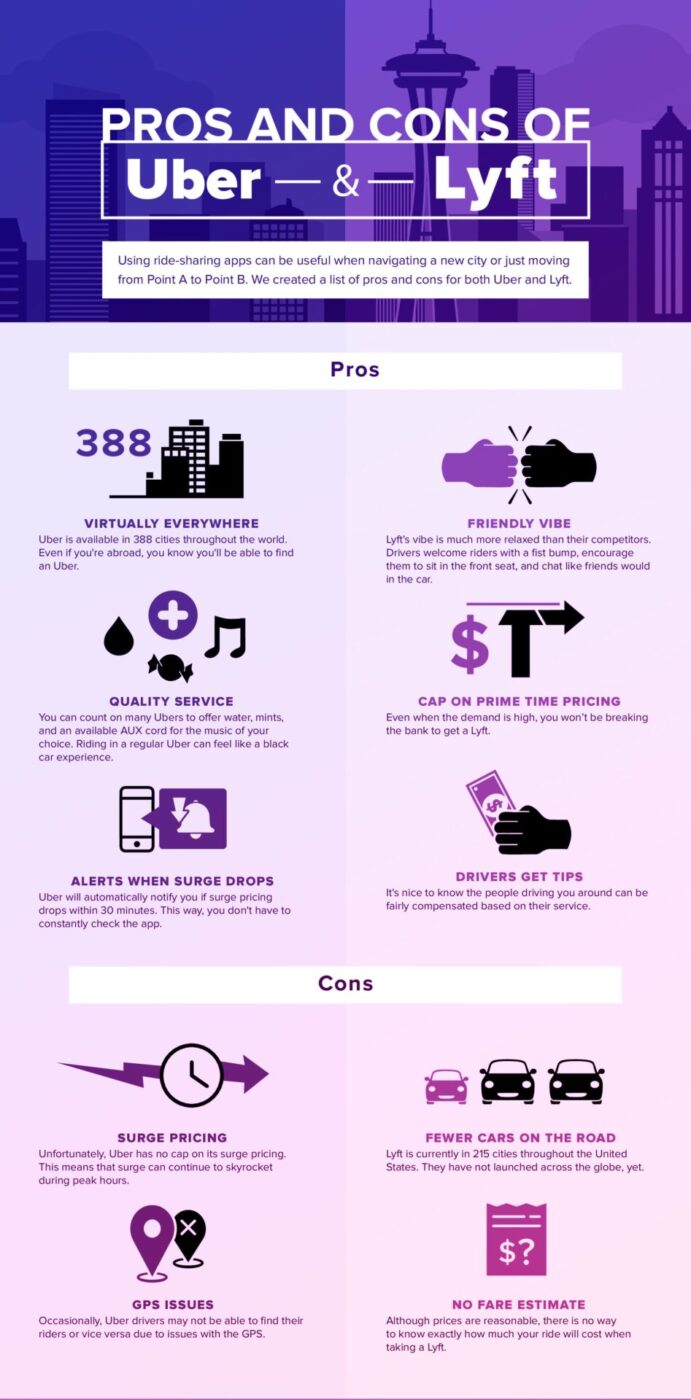How to Conduct a Competitor Analysis Example for Success (+Templates)

Sorry, there were no results found for “”
Sorry, there were no results found for “”
Sorry, there were no results found for “”

Think of some iconic brand face-offs. Pepsi and Coca-Cola, Apple and Samsung, and Target and Costco for instance are well-known for being fierce competitors in their respective industries.
It’s fascinating how they continually strive to outdo each other through clever advertising, innovative products, and strategic marketing.
And if you’ve wondered just how these brands always stay neck-to-neck, the answer is deep competitive analysis.
In this blog post, we explain everything you need to know about competitor analysis, including examples and free templates to help you get started.

A competitor analysis is a detailed study of the current and potential competitors in a specific market. Businesses use it to identify their competitors’ strengths, weaknesses, performance, and strategies so they can understand how to tweak their own marketing positioning for a better competitive advantage.
When performing a competitor analysis, you need to monitor a company’s products, pricing strategy, target audience, marketing tactics, and customer feedback.
An effective competitive analysis allows you to keep a close eye on what your competitors are doing, dodge pitfalls, and even uncover interesting growth opportunities for your business.
Productivity Booster: Use a competitor analysis template to consolidate competitor information into easy-to-digest reports.
A well-executed competitor analysis is a great tool to understand what’s been working well for your competitors, what you can learn from it, and how you can stand out and do things differently to appeal to your customers.
Further, a competitive analysis is your strategy cheat sheet that helps you:
Moreover, a competitor analysis is a good way to anticipate shifts in the market landscape so that you’re always in line with industry trends and changing customer demands.
A thorough competitor analysis will give you valuable insights that can sharpen your strategies. Here’s a step-by-step breakdown of how you can systematically analyze your competitors.
A competitor analysis begins by identifying the different competitors in your target market.
You can classify competitors into three categories:

✨Bonus Tip: A good practice is to identify at least the top few competitors in each category for a more thorough analysis. You can use competitor analysis tools to organize the data you collect, identify patterns, and create strategies.
Once you’ve listed your competitors, you need to decide the specific areas you want to compare.
After you’ve identified these areas, you can tie each one to a few key metrics for focused and actionable insights. This will give you a better picture of how your offerings compare to those of your competitors.
Here’s an overview of some of the common areas of comparison and related metrics:
✨Bonus Tip: Prioritize the metrics that matter to your business and focus on them alone so you don’t end up diluting the effectiveness of your decision-making process.
Now that you know which metrics you want to track, identify the top sources from which you can collect reliable data on your indirect and direct competitors.
For instance, tools like Google Analytics, SpyFu, and SimilarWeb can be used for website audits. Third-party review sites like G2, Trustpilot, and social media provide insights into what users think about your competitors.
✨Bonus Tip: If you want financial information, a good idea is to look at public records or investor reports. You can even opt for AI-powered competitor analysis tools like
This is the part where you study the areas where your competitors fare better and where you have an edge. Depending on your research goals, frameworks like SWOT analysis or Porter’s Five Forces can be helpful tools.
To understand this better, consider using SWOT analysis to focus on finding each competitor’s individual strengths and weaknesses.
On the other hand, Porter’s Five Forces would be more useful in studying the broader industry environment and the systemic factors that are likely to impact all your competitors.
Irrespective of which framework you use, remember to ask yourself some key questions, such as:
✨Bonus Tip: Explore the strengths and vulnerabilities of your competitors with an easy-to-use Porter’s 5 Forces Template that can give a well-rounded picture of the direct and indirect competition within your industry.
After you’ve identified your competitors’ strengths and weaknesses, compare the findings against your company’s performance. Doing this gives you the big picture and tells you if there are gaps your competitors have capitalized on. You can also identify areas where you have a definite competitive advantage that you can improve further.
✨Bonus Tip: Streamline your benchmarking process by using a competitor analysis matrix. It presents competitor data in a visually engaging, organized manner and makes it easier to compare your business metrics against those of your competitors.
Read More: Free SWOT Analysis Templates in Google Docs
Based on the results of your competitor analysis, identify the top three to four areas where you want to start making improvements. Then, develop SMART (Specific, Measurable, Achievable, Realistic, Time-Bound) goals for each area so your efforts stay focused and progress can be tracked effectively.
For example, if you feel the need to improve your marketing strategy to gain an edge over your competitors, you set a goal to improve website traffic by 30% in the next six months. Your SMART goals would look like this:
You can apply this to other areas and find different ways to highlight your USP to stand out in the market.
✨Bonus Tip: Focus on changes that will have an immediate impact, like optimizing website SEO or improving social media engagement, while also planning for bigger, long-term shifts such as product innovation or brand positioning.
Competitor analysis is a multi-step process that involves a lot (and we mean a lot!) of planning, data collection, analysis, and strategizing. Add to the mix the stress of dealing with endless spreadsheets and scattered notes, and you’ve got a recipe for overwhelm.
ClickUp can be your ultimate productivity sidekick.
It helps you stay organized, collaborate like a pro, and bring all your tasks, conversations, data, and ideas under one roof. It is the everything app for work, streamlining complex processes by ensuring everything is organized and accessible.
Say goodbye to endless documents and scattered information.
Use ClickUp Docs to maintain a single, easily accessible repository of notes, data, and observations. Whether you want to list down competitor insights or share key takeaways from an industry report, ClickUp Docs is the perfect tool to manage any kind of information.

You can invite team members to edit the doc, share their feedback, and assign comments. Everyone can contribute in real time and link Docs to tasks to preserve the context for everyone involved in the process.
Use ClickUp Brain, the AI-powered assistant, to create competitive analysis reports, brainstorm ideas, and create actionable plans quickly
You can also use it to summarize meeting notes and highlight tasks, deadlines, and assignees with the power of AI. This way, you don’t have to manually review notes or run the risk of missing key details.

Gather critical data and represent them in a visually engaging manner using ClickUp Dashboards. They are customizable and can give you a bird’s eye view of team workloads, project progress, marketing campaigns, and more.

Dashboards make it easier to monitor specific performance metrics and gauge insights at a glance. They ensure your reports are dynamic and presentation-ready so you can spot trends and identify potential issues before they escalate. Visual elements like charts and graphs also make it easier to represent complex data, making your competitor dashboards easier to understand.
💡Pro Tip: If you want specific insights about anything, simply ask ClickUp Brain and it will search every dashboard in your workspace to give you the most relevant insights. You don’t have to spend time sifting through documents or asking around for the information you need.
To make planning easier, pick a free competitive analysis template by ClickUp for a structured framework with predefined sections to help you systematically gather and analyze competitor information.
The ClickUp Competitive Analysis Template, for instance, allows you to present competitor insights on a whiteboard. The interactive view helps you better understand your competitor’s strengths and weaknesses and the industry landscape. You can add or modify elements as needed for your analysis.
With this template, you can:
Another super useful framework is the ClickUp Competitive Analysis Pricing Template. It is designed to help you study your competitor’s products and services and how they’re being priced. You can compare pricing models and analyze how customers respond to each of them.
The template helps you:
Yet another handy tool is the ClickUp SEO Competitor Analysis Template, which is ideal for building a solid SEO strategy.
It gives you insights into how your competitors are doing with respect to SEO and if there are any opportunities you can leverage for your content strategy. The SEO analysis template is also great if you want to stay updated with the latest SEO trends.
You can use this template to:
A good way to execute your competitor analysis effectively is to ensure that team members know exactly what to do during each stage of the process.
Use ClickUp Tasks to assign clear action items for every team member, complete with due dates and reminders, so nothing gets missed.
Add details like project date, budget, task category, and contact information for every task with Custom Fields. This ensures task assignees have all the information they need to complete their work.

You can also assign color-coded labels to your tasks to help your teammates identify tasks that need immediate attention.
📮ClickUp Insight: 92% of workers use inconsistent methods to track action items, which results in missed decisions and delayed execution.
Whether you’re sending follow-up notes or using spreadsheets, the process is often scattered and inefficient. ClickUp’s Task Management Solution ensures seamless conversion of conversations into tasks—so your team can act fast and stay aligned.
To give you a better idea of how a competitive analysis works, here are some real-life examples of businesses flexing their creative muscles to get ahead.
In the 1970s, McDonald’s held the largest market share in the fast food industry. Burger King was still making its mark, and the two chains were engaged in serious rivalry to determine who stood out in the burger wars.
Burger King and McDonald’s offerings, pricing, and marketing strategies closely uncovered some clever opportunities for product differentiation.
🔥 A good competitive analysis example is the ‘Whopper Detour,’ where Burger King used geofencing to target customers within 600 feet of any McDonald’s location through their mobile app. Customers could pre-order a Whopper for just a cent, and the Burger King app would direct them to the nearest outlet to pick up their order.

Another example of a competitor analysis is Lyft’s study of Uber’s pricing strategies, loyalty programs, and growth, which helped it create a stronger presence in specific cities to cater to local needs.
🔥 Moreover, Lyft also brands itself as a ‘warmer’ alternative to Uber for a more customer-centric experience. As a result, Lyft has evolved considerably, catching up with Uber in terms of market share and continuing to expand its offerings to stay competitive.

Netflix is one of the key players in the streaming and entertainment industry and stands out against other competitors like Prime Video, Disney+, and Apple TV+.

🔥 Here’s what Netflix does better compared to its competitors:
Let’s take a look at some common challenges with competitor analysis and how you can tackle them.
Erratic data can lead to poor decision-making and misguided strategies. It can skew your insights and impact major business decisions like pricing and product development.
Solution:
✅ Collect data from multiple credible sources
✅ Use competitive intelligence tools or market research platforms to get more accurate competitor insights
You may miss out on alternative product offerings you haven’t really considered. Even though indirect competitors may not be on the radar, changing market dynamics can make them a potential threat.
Solution:
✅ Leverage Porter’s Five Forces to identify any threats of substitution
✅ Monitor competitors in adjacent markets
Factors like brand loyalty, innovation, and customer sentiment are pretty hard to quantify. As a result, it can be difficult to understand the true extent of your competitor’s advantage.
Solution:
✅ Use social listening to identify what customers think about competitors actively
✅ Leverage brand valuation models to understand the financial value of a brand. This includes income-based valuation, market-based valuation, or cost-based valuation
Below are some useful tips for effective competitor analysis.
Competitive analysis is about staying sharp and flexible, adapting to new information, and pivoting your strategy as and when needed.
When done right, competitor analysis can help you identify market gaps, respond faster to market trends, improve product development, and more. It’s like a roadmap to success, guiding you to smarter decisions and allowing you to outmaneuver your competition.
If you want a way to organize your data, get creative insights, and streamline your analysis, ClickUp is your best friend. It’s got everything you need to manage your tasks, collaborate efficiently, and stay on top of deadlines.
So, if you’re ready to beat your competition, sign up on ClickUp today and turn your competitive insights into action.
© 2025 ClickUp